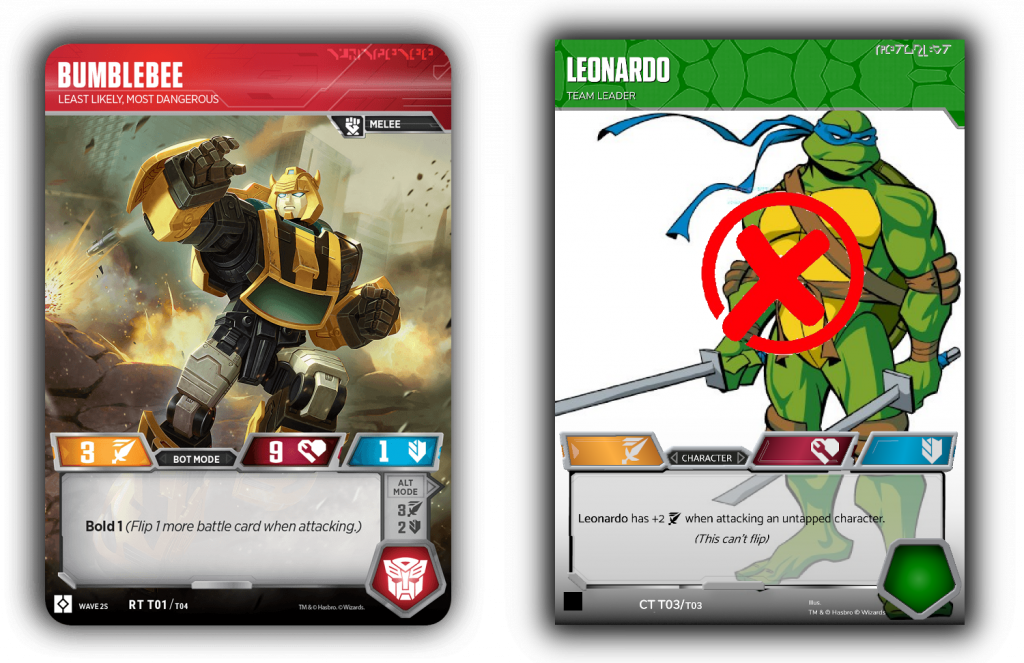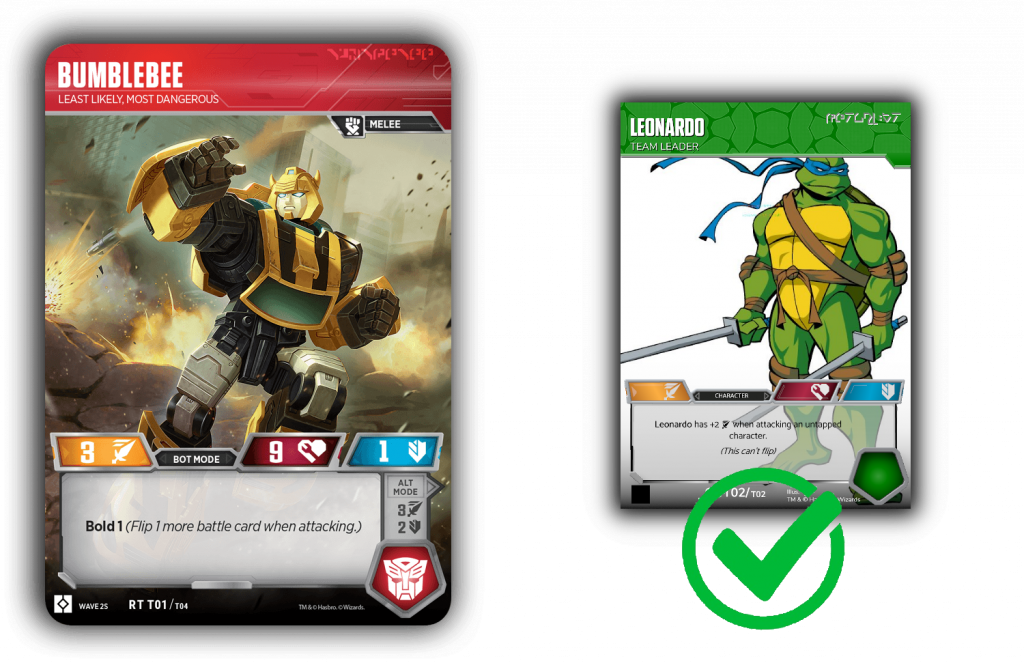When Transformers hit the scene in August of 2018, I was pretty pscyhed. I was at GenCon for my software company, running a booth and hosting demos, and I was ITCHING to get out of the hall and into a demo event, and snag my own starter and packs. I’ve been in the industry for almost twenty years now, and spent a good deal of time before that as a player. I’ve seen a TON of games come and go (and written a few myself) and everyone seemed to operate on a gimmick. The granddaddy, Magic the Gathering, was your most straightforward game, and YuGiOh and Pokemon largely built on those. Future games would add plastic swords, slotted stat trackers, webcams, transparent cards…a TON of ancillary, unneeded stuff, and all it did was clutter the table. If I see a gimmick, it usually turns me off pretty solidly. But Transformers was doing something…fun.
Magic experimented a little with oversized cards back in the day, their first real run at a gimmick, an idea I very much still like and would love to build a deck out of. They even went a little further when they created one of my favorite concepts with Vanguard and made these iconic characters whom you built around a double-sized card with a new frame. It was brilliant. The card stood out on the table, there was no mistaking who your iconic character was, and there was no risk of it getting mixed into a deck. Though Vanguard has fallen off, the spirit lives on with the “Commander” format, wherein players use specific characters already in the game toward a similar purpose. Though not necessary, Wizards acknowledged the usefulness of having these characters “stick out” and in specialized “Commander” product would include similar double-sized copies of the characters featured, achieving similar results.
When Transformers was announced, I was tepidly interested. My game store was open for the debacle that was the “Build & Battle” game and it was painfully boring. Transforming was tedious, pieces broke far too easily, and the game play was just plain dumb rock/paper/scissors. Early spoilers, however, were exciting, and they revealed something pretty freaking awesome: the bots weren’t just another card, they were BIG! Well, double-sized, but even so it was pretty neat that the characters stood out.
As the game progressed, they introduced new elements that operated on a similar idea: the Titan Metroplex and the Guardian Omega Supreme were EVEN BIGGER. Characters who towered over the typical Transformer in plastic and in print towered over them in-game as well! New releases continued to play on this idea; Micromasters, the characters who became weapons, heads, engines, or just smaller vehicles were printed on the smaller paper. “Weaponizers” came as components; they played as large bots and actually broke down into their smaller components, a major benefit of that “double sized” size.

In short, the table felt like the Transformers battlefield, and like our toy shelves. And for the game design; size matters.
With the release of the MSE 2.0 template, I’m including some major new elements that allow massive degree of customizations. The Transformers TCG engine, I feel, is a bigger engine than JUST Transformers. Its largely clean, simple, and its assets and terminology are fairly agnostic, meaning it doesn’t REQUIRE shoehorning outside concepts into predefined assets like custom sets do for Magic: The Gathering’s mana or Pokemon’s Energy, or other games’ resource system. The questions really are just does the character or faction excel at offense or defense, and tailoring support cards to match that strategy.
To that end, this particular document is an encouragement to remember: size matters. And balance matters to that end as well. If you want to integrate other properties into the Transformers TCG, pay some attention to what’s going on and use the assets the game gives us to bring more flavor to your creation.
In a hypothetical example, I’ve mocked up some cards for a “Teenage Mutant Ninja Turtles” build. Our hero, Leonardo, is humanoid sized, and an exceptional fighter. Leo goes toe-to-toe all the time with similarly sized and less-than-skilled Foot Soldiers all day long. Neither Leo nor a Foot Soldier are as big, or as powerful, as your typical Transformer. Pairing Leo and Bumblebee off, a Leo-sized Bumblebee would be…kinda off scale.

Contrast, a smaller, say…”micromaster” sized…Leo…that’s a little more on track!

When paying attention to things like this then, you’re also opening up design space for the future. Classic Turtles villain “Krang” of the original TV series is noted for possessing a mechanical body capable of growing to towering heights; meanwhile, the original model of the robot Chromedome was built to similar scale. Saving the “large” frame for such characters achieves a similar result as Transformers, putting large characters on a large scale. From there, Shredder’s terrifying Technodrome can take a role as a Titan sized piece and really rock the table.
Things like Turtles not up your alley? How about the Mighty Morphing Power Rangers? Human heroes duke it out with street level threats on micromaster frames, call upon their vehicles, the Zords, in the Transformer-sized frames, and when the going gets too rough can flip and combine to form their group’s Mega Zord!

As the new template drops, ideally this weekend as I wrap up some bug testing, I look forward to seeing new elements out into the wilds of the game! I hope the software and advice herein helps new developers make some awesome additions to the game we love.
~Till All Are One
